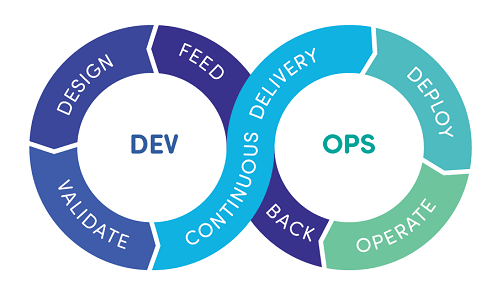Digital transformation is changing the rules across the industry and will continue to do so for the foreseeable future. With the stunning evolution of the cloud, the relentless advent of 5G and SD-WAN, along with the exacting demands of Wi-Fi 6, SDN, NFV, virtual networking, and more, these technology innovations must be managed effectively and simultaneously – all while they’re accelerating. It’s an overwhelming prospect for many business leaders focused on their opportunity horizon and what it takes to get there.
To keep pace, a growing number of organizations face the realization for a pressing need for a metamorphosis in the strategies behind their Telecom Innovation Pipelines. At the same time, their priorities on the fundamental objectives of their business remain immutable. From the test and assurance perspective, here's what those priorities boil down to:
Attaining significantly accelerated speed and volume of reliable quality releases
Ensuring maximized and holistic scalability, efficiency and productivity
Lowering Capex and Opex costs decisively
It’s all about getting new products and services from conception and development through to operational deployment as quickly as possible. Yet, couple these objectives and what it takes to achieve that in the face of widespread digital transformation: the need for new experts in evolving areas of technology, new test infrastructure, new labs, new processes and new training. These are just a sampling of the investments required by next-generation technologies. Collectively, they strongly suggest the need for a new approach.
Identifying what aspects in the test process impact the three core business priorities above is a good start. In some cases, all three are negatively influenced by a single factor in testing. For example, with silos across both internal teams and supplier ecosystems, service providers’ efforts to transform an organization’s Telecom Innovation Pipelines are hampered by unwieldy manual, repetitive and time-consuming testing in each silo. These brittle and entrenched traditional testing practices not only slow the pace of new releases, they also require substantial investment at each new technology cycle. These factors add up to the heartburn trifecta of traditional testing. Before organizations pull the trigger on their next investment in testing, this could be the perfect time to rethink how they approach validation and addressing the three pillars of speed, scalability and cost.
This thinking process leads to answering a few hard questions: “Is testing our core competency? Should we still build and manage our testing infrastructure? Is there a faster, less expensive way?”
As part of the rethinking process, many organizations need to challenge the foundation of their testing approach and assess whether the traditional validation model still works for them. This thinking process leads to answering a few hard questions: “Is testing our core competency? Should we still build and manage our testing infrastructure? Is there a faster, less expensive way?"
Table stakes for next-gen testing
Simply put, to maintain their competitive position and proactively address the three pillars of business priority in testing, an organization’s Telecom Innovation Pipeline must support Web-scale massive rollouts with predictable outcomes. To achieve this, their testing process must be rebuilt with an agile, continuous integration / continuous deployment (CI/CD) approach, to deliver continuous testing (CT), end-to-end, from development through operation. This objective can only be achieved with mature proven solutions in place in the following three areas which represent the core prerequires in rethinking any test strategy:
Test lab optimization and automation, including the consolidation of disparate physical labs into a unified and globally scalable resource
Test campaign automation with comprehensive test suite management and report sharing across internal and external global teams
DevOps best practices to ensure optimum workflow processes are in place, end-to-end, across all teams involved in validation

Successful Web-scale massive rollouts are only possible with a next-gen Telecom Innovation Pipeline in place.
If an organization has the deep bench of technology expertise and capability to address the exacting requirements of next-gen testing, they have likely already rethought their approach to testing and have embarked on implementing the changes in their validation framework required to keep pace. The ones that haven’t should take the opportunity to consider solutions that give them a running start at the complex challenge with partners that already have this expertise and technology capabilities.
Requirements for validation success with a managed solution
This approach to delegated testing combines a qualified vendor-neutral partner’s test expertise, products and resource management capabilities into a bundled service that allows them to hit the ground running for the organization to quickly deliver testing functions and seamlessly integrate these with other operator functions. These partners should have existing working relationships with all the major players in cutting-edge technologies, such as 5G, SD-WAN and Cloud, and have a comprehensive test plans in these areas, along with well-established test and lab automation expertise.

The key components of a viable managed solution in next-gen validation are:
Lab as a Service: A qualified Lab as a Service (LaaS) managed solution enables physical resources across worldwide labs to be pooled, and manages and tracks utilization of all lab resources, so resources can be rapidly reconfigured, testbeds can be spun up and down on-demand, and complex validation test suites can be fully automated. This solution framework should enable zero-touch provisioning by connecting all physical, virtual and hybrid infrastructure and test equipment with programmable Layer-1 switches. A web interface can provide a “single pane of glass” where resources located in different global regions are discovered and made accessible to users worldwide and testbeds can be designed and provisioned.
Test as a Service: A mature Test as a Service (TaaS) managed solution must be intelligent with environment-aware automated continuous test case management, execution and analysis, and be easy to use, so tests can be published, scheduled and shared with anyone, anywhere. A TaaS solution must provide a system that will intelligently deploy tests with the flexible ability to ramp-up or down test cycles to meet on-demand objectives with less resource constraints. Ultimately, a TaaS solution should minimize test times and streamline test execution from lab to production environments and extend into deployment. Customization of a turnkey suite of automated validation tests should cover a comprehensive range of test cases in next-gen networking. Integration of automated test suites with the CI/CD pipeline based on provider requirements should automate acceptance, regression and troubleshooting and facilitate access by a vendor ecosystem.
The DevOps Imperative: Once the physical infrastructure is centralized and virtualized for greater efficiencies with LaaS, and strategies have been optimized by a vendor-agnostic and scalable TaaS solution, the next tier of lab and test automation advancement involves leveraging DevOps and agile principles across all teams and regions to deliver comprehensive CT – the foundation of true CI/CD. This is achieved through proven data management and automation best practices. This builds quality into the solution by integrating labs with development and operations (DevOps), creates knowledge which is easily distributed through sharing of reproducible environments, delivers accelerated productivity through streamlining of processes with integrated dev-QA workflows and optimizes the entire test lab environment through automated services.

Adoption of DevOps best practices across teams and regions ensures comprehensive efficiencies in end-to-end validation.
With a scalable Telecom Innovation Pipeline in place, incorporating CI/CD powered by a mature LaaS/TaaS approach to foster continuous evolution of a technology solutions, organizations can focus on their core objective: the development and operation of innovative products and services which enables them to continuously deploy new devices, network services and technologies. Without this in place, the rising tide of technical debt from growing inefficacies in testing will directly influence the three pillars of business concern, and in turn, impact an organization’s bottom line along with their prospects of remaining successful in today’s fast-moving markets.
See a real-world example in our case study: Calix Consolidates Labs into a Single Automated Lab.




